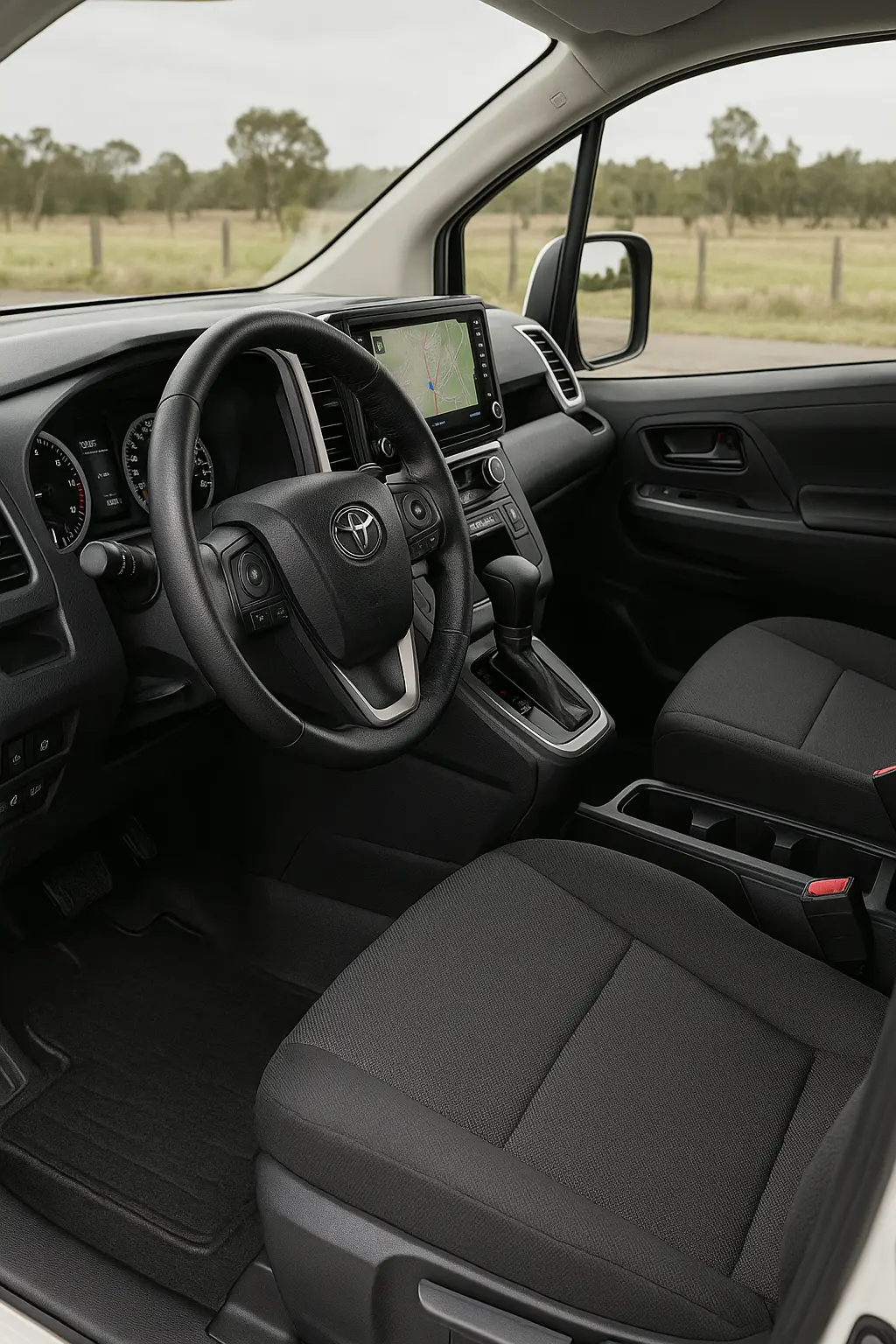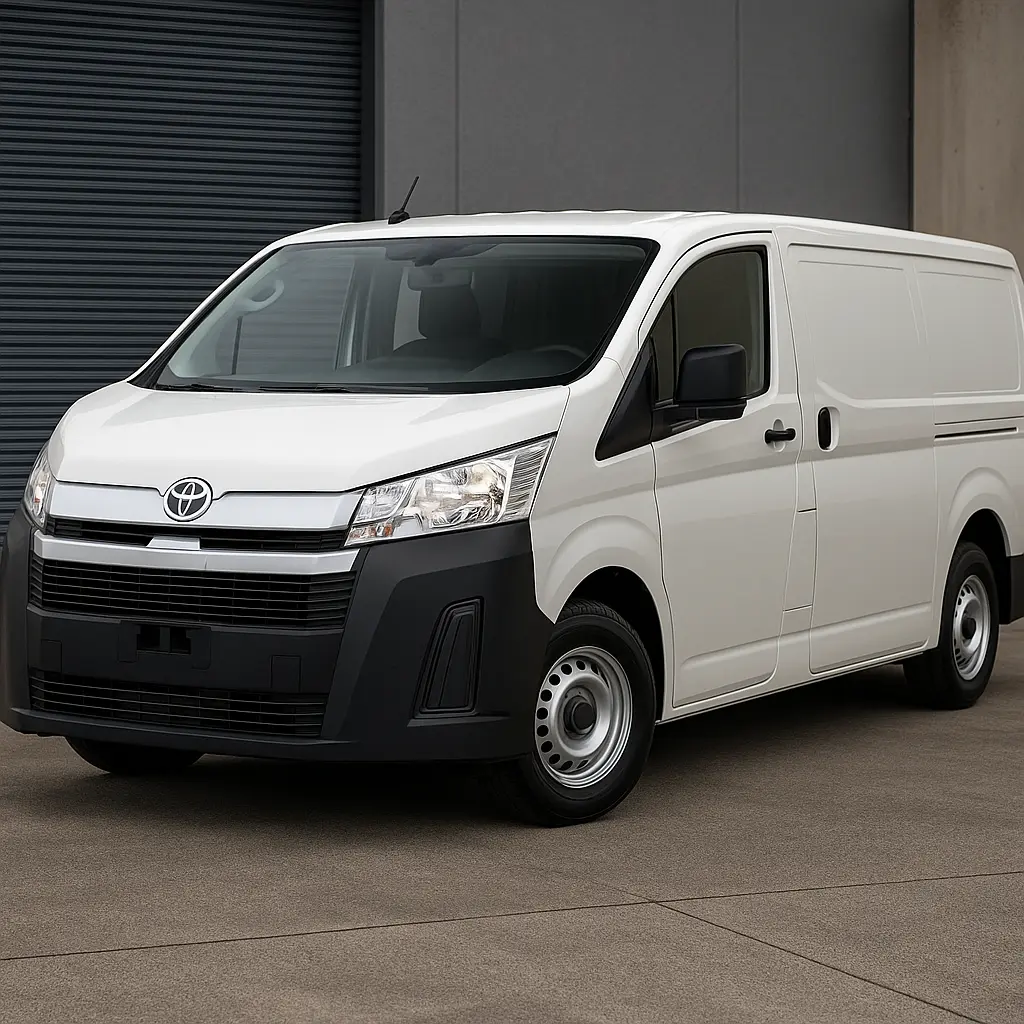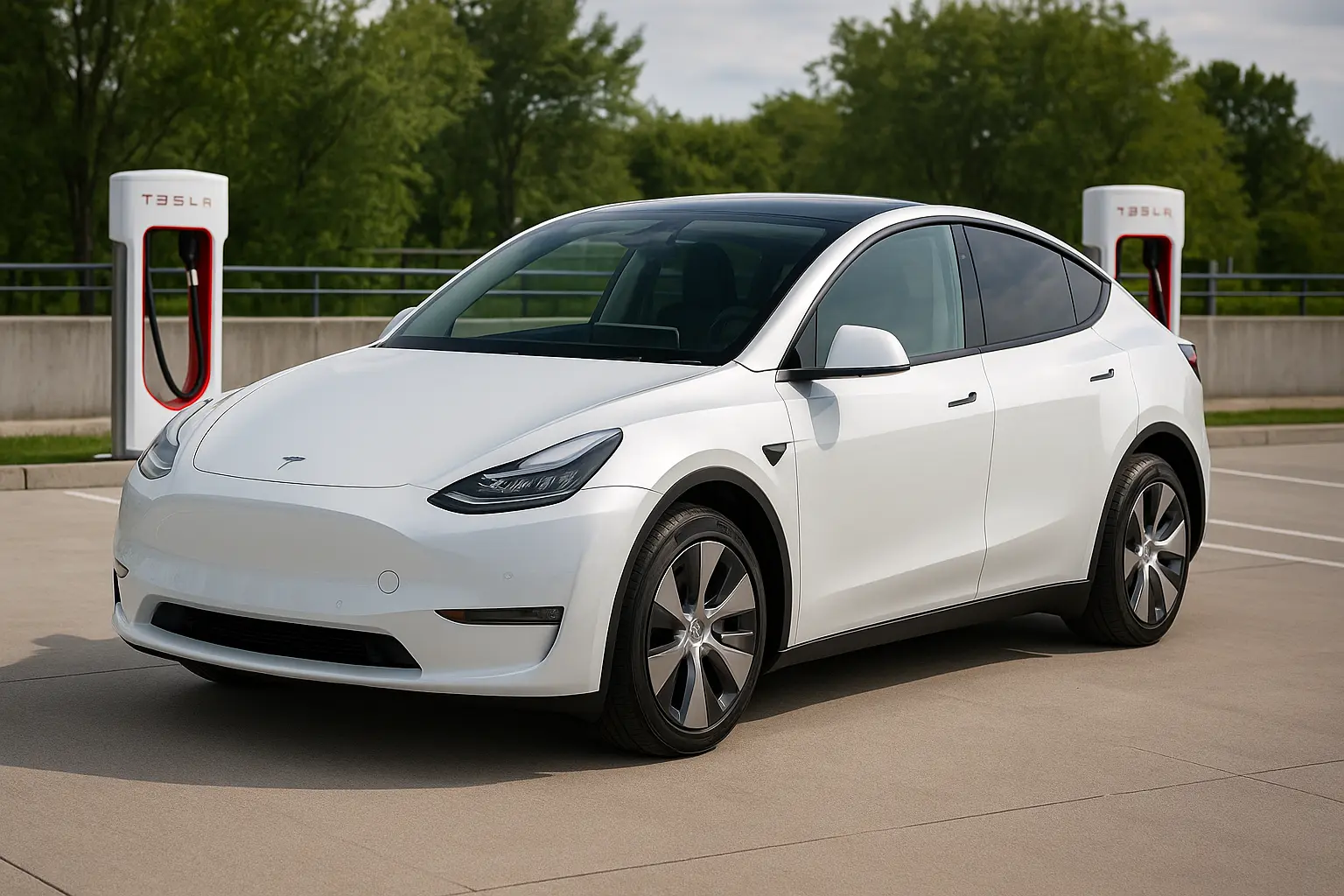When it comes to reliability, practicality, and sheer dominance in the commercial van segment, the Toyota HiAce is an undisputed king. In Australia, the HiAce has been more than just a van—it has been a backbone for businesses, tradies, couriers, and fleet operators for decades. With the arrival of the 2025 Toyota HiAce, Toyota has doubled down on its commitment to keeping Aussie businesses moving forward, offering a blend of modern features, efficient performance, and enhanced practicality.
This review takes a deep dive into what makes the 2025 HiAce a commercial powerhouse, exploring its design, features, specs, efficiency, and long-term ownership value.

A Legacy That Defines Trust
For decades, the HiAce has been synonymous with durability. It’s one of those vehicles you can spot on Australian roads from every generation, still soldiering on after hundreds of thousands of kilometres. This reputation didn’t come by chance—Toyota engineered the HiAce with robust construction, simple yet reliable engines, and a focus on practicality over gimmicks.
In 2025, the HiAce keeps this legacy alive but updates it with modern needs in mind. It isn’t just a workhorse anymore—it’s a technologically capable van that still delivers on its promise of getting the job done.
Exterior Design – Function Meets Modern Styling
Unlike some flashy European vans, the HiAce’s exterior design sticks to its roots: function over flamboyance. The 2025 model maintains its boxy silhouette, ensuring maximum cargo capacity.
Highlights include:
- Sliding side doors – Wide access points for loading in urban and suburban environments.
- High roof and long wheelbase options – Configurations to suit various industries, from delivery services to shuttle operators.
- Robust front fascia – A cleaner, more aerodynamic design than its predecessors.
- Durable paint finishes – Built to withstand the rigours of everyday work.
The design isn’t about turning heads; it’s about ensuring every panel and curve serves a purpose.
Interior – Comfort Where It Matters
Step inside the 2025 HiAce, and it’s immediately clear that Toyota designed this van for real-world use.
- Driver-focused cabin – Ergonomically placed controls and a high seating position for better visibility.
- Durable materials – Hard-wearing plastics and fabrics that can withstand daily use.
- Tech upgrades – Apple CarPlay, Android Auto, and an updated infotainment system make long hours on the road less tedious.
- Practical storage – Multiple compartments, cupholders, and under-seat storage ensure no wasted space.
The cabin isn’t luxury-grade, but it delivers exactly what workers need: comfort and usability without unnecessary clutter.
Cargo Space & Practicality
One of the main reasons Australian businesses choose the HiAce is its sheer practicality.
- Cargo volumes – Depending on the variant, it offers anywhere from 6.2m³ to over 9m³.
- Payload capacity – Strong enough to handle up to 1,200kg, depending on configuration.
- Flexible configurations – Panel van, crew van, and commuter bus options.
- Tie-down points – Standard across the cargo area, ensuring loads remain secure.
- Sliding and rear door access – Makes loading and unloading in tight spaces simple.
This practicality makes it a preferred option for courier fleets, small businesses, and tradies who need reliable daily performance.
Engine Options & Performance
The 2025 HiAce continues to offer powertrains suited to Australian demands:
- 2.8L turbo-diesel engine – Delivers torque-rich performance, ideal for carrying heavy loads.
- Petrol option (in select trims) – Aimed at operators who want lower upfront costs and operate in urban settings.
- Transmission – Smooth-shifting automatic gearbox, plus manual availability in base models.
- Towing capacity – Up to 1,900kg braked towing capability, handy for trailers and equipment.
Toyota has engineered the HiAce to balance power and efficiency, ensuring businesses don’t overspend on fuel while still getting dependable grunt.
Fuel Efficiency & Running Costs
In today’s competitive market, running costs can make or break a business fleet. The 2025 HiAce aims to keep those costs in check.
- Fuel consumption – Around 7.5L/100km for the diesel, depending on load and driving style.
- Service intervals – Toyota’s capped-price servicing ensures predictable costs.
- Durability – The HiAce’s engine is renowned for long lifespans with proper maintenance.
Compared to rivals, the HiAce strikes a strong balance between efficiency and operational reliability.
Safety & Technology
Safety has become a major focus for commercial vans, and Toyota has ensured the HiAce stays ahead of the game.
Standard and available features include:
- Toyota Safety Sense suite – Pre-collision system with pedestrian detection, lane departure alert, adaptive cruise control.
- Seven airbags – Including curtain airbags for maximum protection.
- Reversing camera & sensors – Standard across the range.
- Blind-spot monitoring & rear cross-traffic alert – Enhancing confidence in tight city driving.
This is a van designed not only to move goods but to keep drivers, passengers, and other road users safe.
Variants & Configurations
Toyota offers the HiAce in multiple body styles and trim levels, catering to different industries:
- LWB (Long Wheelbase) Van – Perfect for urban deliveries.
- SLWB (Super Long Wheelbase) Van – Maximum cargo capacity.
- Crew Van – Seats up to five with cargo room.
- Commuter Bus – Popular with shuttle services and group transport providers.
Each variant is built with the same core strengths but tailored to specific needs.
Ownership, Resale & Reliability
Few vehicles hold their value in Australia like the Toyota HiAce.
- Resale value – Strong demand in the used market ensures higher returns.
- Long-term reliability – Proven engines and drivetrain longevity.
- Toyota’s service network – Extensive support across Australia, crucial for businesses operating in remote regions.
It’s a van built not just for today’s needs, but for the long-term investment businesses require.
How the HiAce Compares to Rivals
The HiAce competes against models like the Hyundai Staria Load, Ford Transit Custom, and Mercedes-Benz Vito.
- Hyundai Staria Load – More modern styling, but Toyota offers better long-term durability.
- Ford Transit Custom – Strong on driver comfort, but HiAce edges out in reliability and resale.
- Mercedes-Benz Vito – Premium interior, but higher costs and less affordable servicing.
The HiAce stands as the most balanced option—affordable, reliable, and widely supported.
Verdict – Why the 2025 HiAce Remains the Top Choice
The 2025 Toyota HiAce isn’t flashy, but that’s exactly its strength. It understands its audience: business owners, tradies, and fleet managers who need a vehicle that delivers every single day.
It offers a blend of practicality, fuel efficiency, safety, and Toyota’s hallmark reliability—all at a cost that makes sense for long-term ownership. Whether you’re a small business needing one van or a large enterprise running a fleet, the HiAce continues to be the dependable backbone of Aussie commerce.
Leave a comment
Your email address will not be published. Required fields are marked *




















